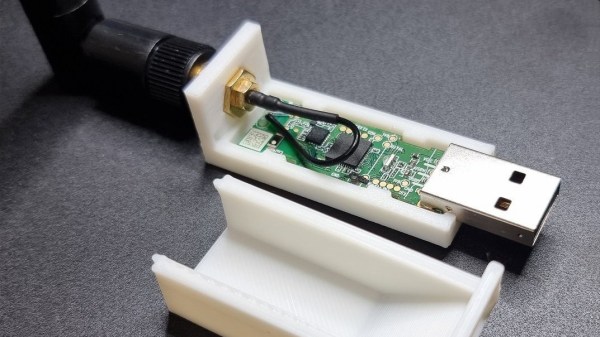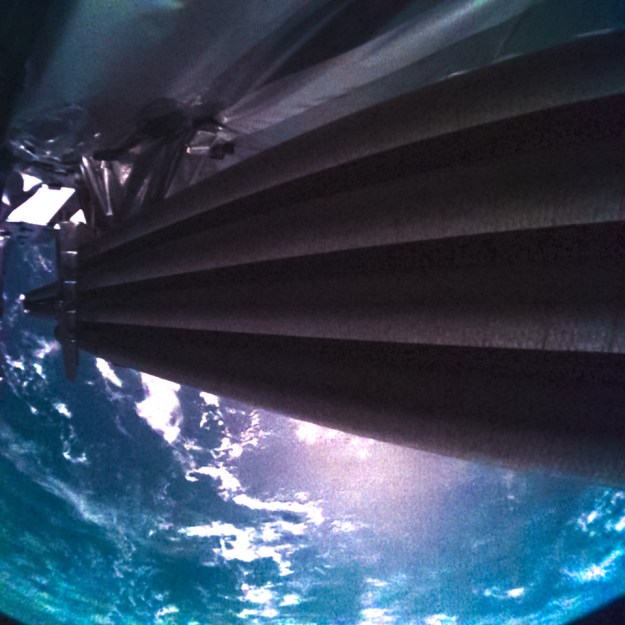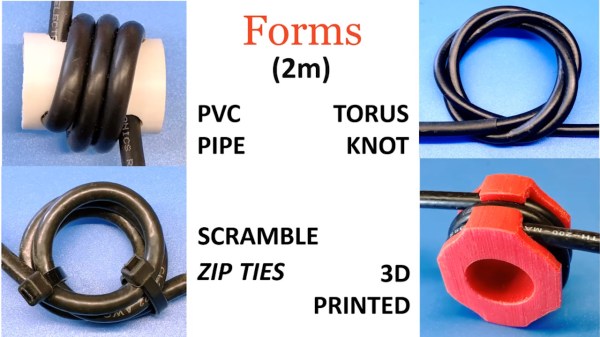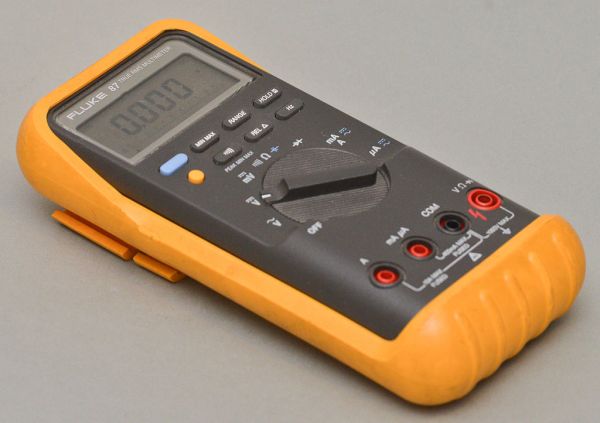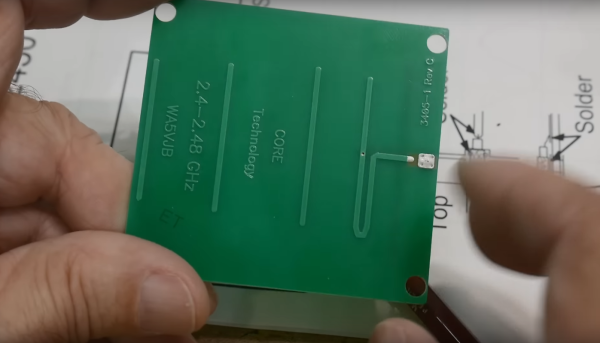[rafii6312]’s Corsair HS80 wireless headset had a big problem: short range. The sound quality was great, but the wireless range wasn’t winning any friends. Fortunately, the solution was just to swap the small SMT antenna on the USB transmitter for an external one.

This particular headset relies on a USB dongle to transmit audio from PC to headset over its own 2.4 GHz wireless connection. By popping open the USB dongle, [rafii6312] was able to identify an SMT antenna and easily desolder it, replacing it with a wired connection to a spare 2.4 GHz external antenna. That’s all it took to boost the headset’s range from barely one room to easily three rooms, which is a success by any measure.
Sadly, the USB transmitter dongle doesn’t have any intention of being opened and puts up a fight, so the process was a bit destructive. No problem, [rafii6312] simply fired up Fusion360 to design a new 3D-printed enclosure that accommodated the new antenna. Pictures, instructions, and 3D model files are all available on the project page, if you want to improve your headset, too.
This kind of antenna upgrade is reasonably straightforward, but if one is armed with the right knowledge, antenna upgrades from scratch using scrap wire and dollar store hardware are entirely possible. Just be sure to pick an antenna that doesn’t weigh down your headset.

